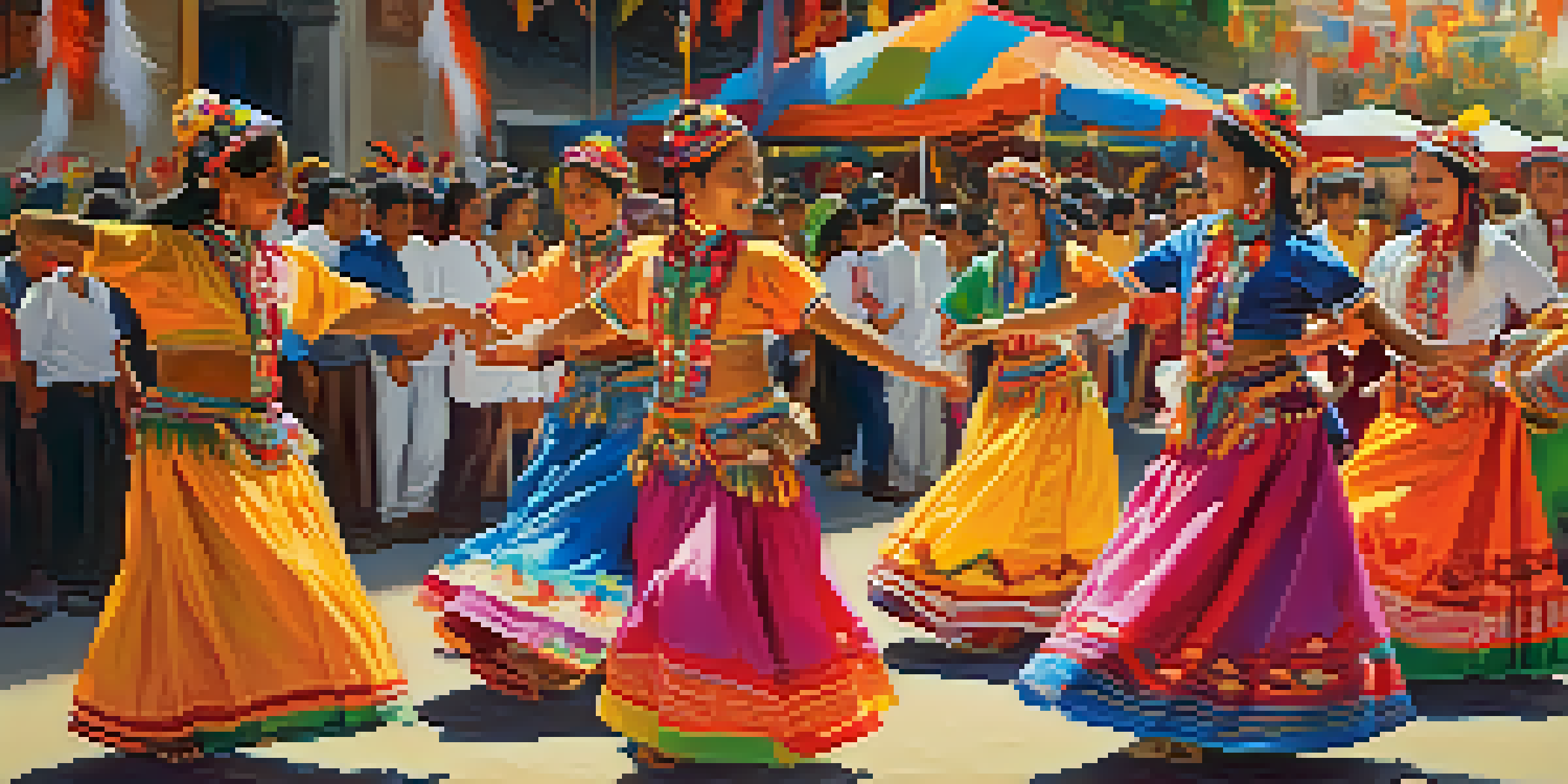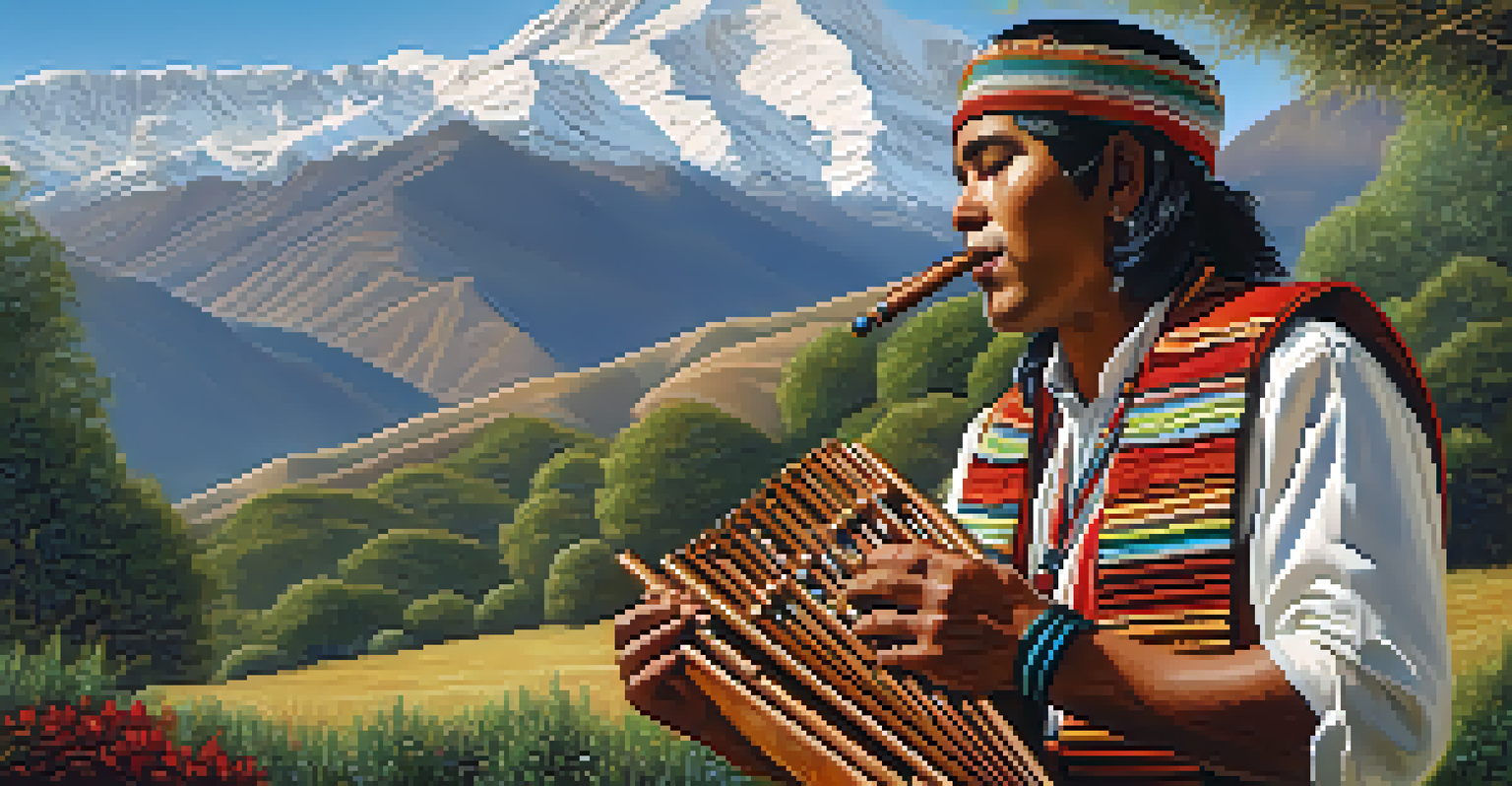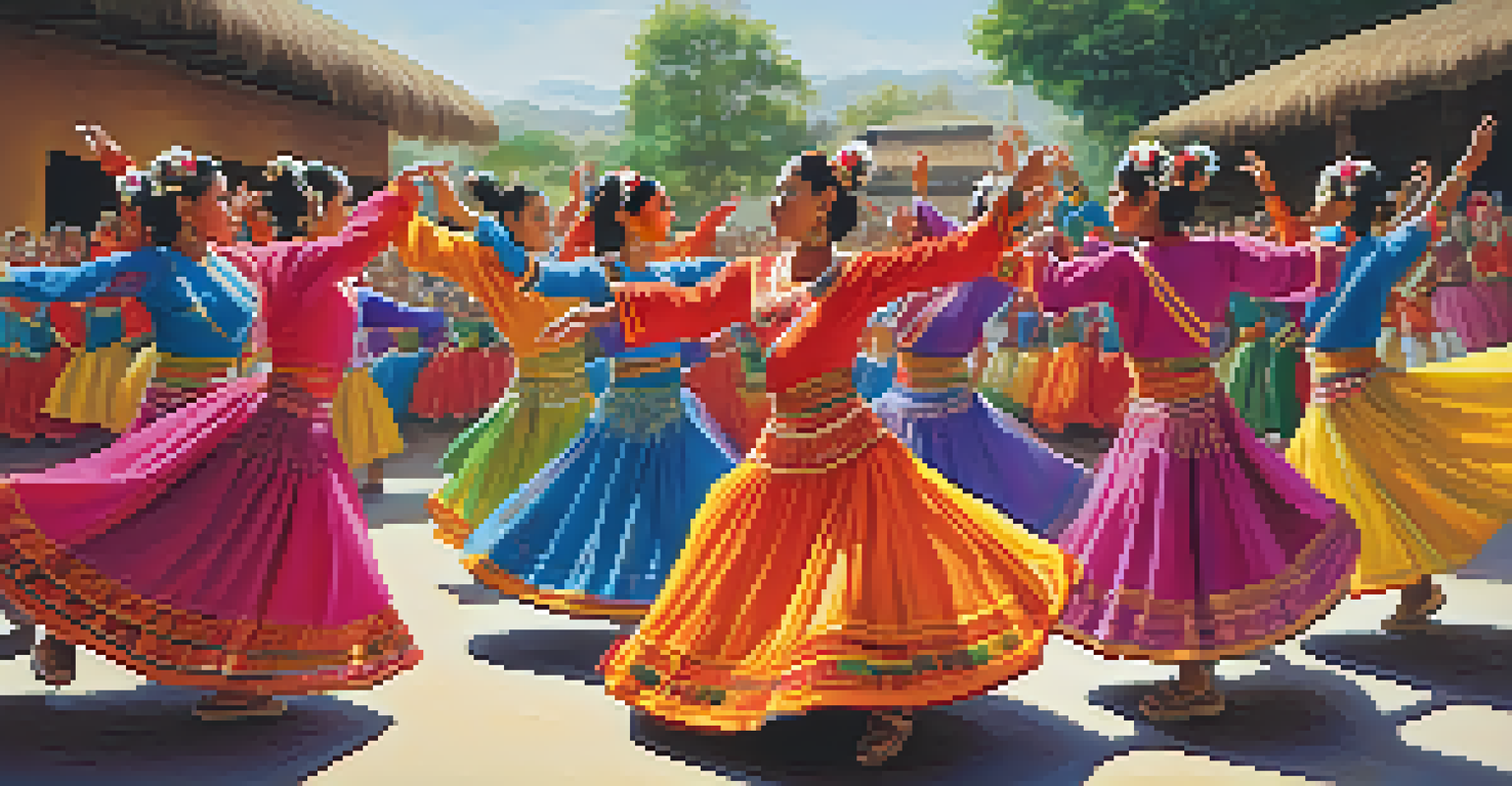Peruvian Music and Dance: A Magnet for Cultural Tourists

The Rich Tapestry of Peruvian Music and Dance
Peruvian music and dance are a vibrant reflection of the country's diverse cultures. With influences from Indigenous, African, and Spanish traditions, the melodies and rhythms create a unique soundscape. From the haunting notes of the pan flute to the energetic beats of the cajón, each genre tells its own story.
Music is the shorthand of emotion.
Dance is equally significant, with traditional forms like the Marinera and Huaylash captivating audiences. These dances are not just performances; they are celebrations of history, love, and community. Tourists often find themselves swept away by the colorful costumes and passionate movements.
Together, music and dance embody the spirit of Peru, making it a cultural magnet for travelers. As visitors engage with these art forms, they gain deeper insights into the country’s heritage and social fabric.
Cultural Festivals: A Showcase of Tradition
Peru hosts numerous festivals that highlight its rich musical and dance traditions. Events like Inti Raymi and the Festival de la Marinera draw locals and tourists alike, offering a glimpse into the country's vibrant culture. These festivals are filled with live performances, traditional food, and lively interactions.

Attending a festival allows tourists to experience the infectious energy of Peruvian music firsthand. The atmosphere is electric, with everyone encouraged to join in the dance, creating a sense of unity and celebration. This immersive experience leaves a lasting impression on visitors.
Peruvian Music Reflects Cultural Heritage
Peruvian music, influenced by Indigenous, African, and Spanish traditions, serves as a vital expression of national identity and community connection.
Moreover, these festivals serve as a platform for preserving cultural heritage. They provide an opportunity for younger generations to learn traditional dances and music, ensuring that these practices continue to thrive.
The Role of Music in Peruvian Identity
Music in Peru is not just an art form; it is a crucial aspect of national identity. Many Peruvians see their music as a way to express their roots and share their stories with the world. The deep connection between music and cultural identity is evident in the pride locals take in their traditional sounds.
Dance is the hidden language of the soul.
Genres like Andean folk music resonate strongly among communities, often played at social gatherings and rituals. This shared experience fosters a sense of belonging and continuity, linking generations through shared melodies. Tourists often feel this connection as they engage with local musicians.
As tourists partake in these musical experiences, they become part of a larger narrative. They not only enjoy the sounds but also understand the significance behind them, enriching their travel experience.
Exploring Regional Differences in Music and Dance
Peru’s geography plays a significant role in shaping its music and dance. Each region has its own distinct styles, influenced by local traditions and cultures. For instance, the coastal regions are known for their Afro-Peruvian rhythms, while the Andes are famed for their Indigenous sounds.
Traveling through Peru, tourists can witness this diversity firsthand. In Lima, they might dance to the groovy sounds of Festejo, while in Cusco, they could find themselves captivated by the graceful movements of the Huaylas. This regional variation enriches the overall cultural tapestry of the country.
Festivals Celebrate Music and Dance
Cultural festivals in Peru, such as Inti Raymi, provide immersive experiences showcasing traditional music and dance, fostering unity and cultural pride.
Understanding these differences allows travelers to appreciate the complexity of Peruvian culture. It also provides a more comprehensive view of how geography and history shape artistic expression.
How Music and Dance Enhance the Travel Experience
For many travelers, engaging with local music and dance is a highlight of their journey. These experiences can transform a standard trip into a memorable adventure. Whether it's taking a dance class or attending a concert, these activities foster authentic connections with the culture.
Participating in traditional music and dance allows tourists to step out of their comfort zones, often leading to unexpected joy and laughter. It’s a chance to learn something new, meet locals, and create lasting memories. This sense of engagement is what travelers often seek.
Ultimately, music and dance provide a lens through which to view the culture, history, and people of Peru. They become a bridge that connects tourists to the heart of Peruvian life, enriching their overall travel experience.
The Influence of Globalization on Peruvian Music
Globalization has significantly impacted Peruvian music, introducing new influences while also raising questions about cultural preservation. Many contemporary artists blend traditional sounds with modern genres, creating innovative fusions that appeal to a broader audience. This evolution keeps the music fresh and relevant.
However, this change also brings challenges, as some worry about losing traditional elements. The balance between embracing new influences and preserving heritage is a delicate one. Tourists can witness this evolution in local music scenes, where tradition meets innovation.
Globalization Shapes Musical Evolution
While globalization introduces new influences to Peruvian music, it also challenges the preservation of traditional elements, creating a dynamic cultural exchange.
Ultimately, globalization presents an opportunity for cultural exchange. As international audiences embrace Peruvian music, they help elevate its visibility, encouraging artists to keep their traditions alive while exploring new creative avenues.
Supporting Local Artists and Communities
Cultural tourism centered around music and dance has a positive impact on local artists and communities. As tourists flock to Peru, they create demand for authentic musical experiences, providing opportunities for local musicians to showcase their talents. This can lead to economic benefits and the revitalization of traditional practices.
Supporting local artists also fosters a sense of pride within communities. When tourists appreciate traditional music and dance, it reinforces the value of cultural heritage, encouraging locals to continue their artistic practices. This mutual appreciation can lead to enriching interactions.

Moreover, cultural tourism can help fund community projects and initiatives. By investing in local art and culture, tourists contribute to the sustainability of these traditions, ensuring they endure for future generations to enjoy.
The Future of Peruvian Music and Dance Tourism
As interest in cultural tourism continues to grow, the future of Peruvian music and dance looks bright. Tourists are increasingly seeking authentic experiences that connect them to the culture, and Peru offers a wealth of opportunities. This trend could lead to a deeper global appreciation of Peruvian traditions.
Moreover, as technology advances, artists can share their music and dance with a wider audience through social media and streaming platforms. This exposure not only broadens their reach but also invites international collaboration, enhancing the richness of Peruvian music.
Looking ahead, it’s essential to strike a balance between promoting tourism and preserving cultural integrity. By fostering responsible tourism practices, Peru can ensure that its vibrant music and dance traditions thrive for generations to come.